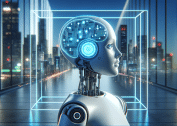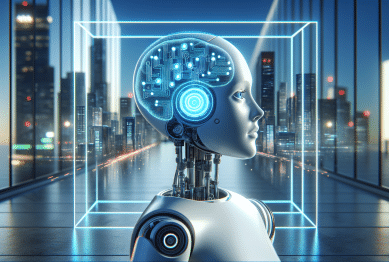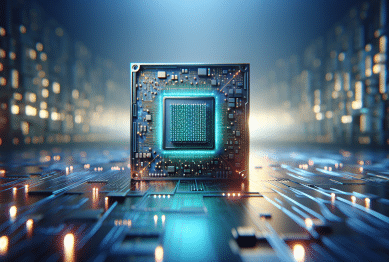Artificial intelligence is everywhere — shaping daily routines, powering devices, and inspiring curiosity. This guide explores what artificial intelligence really means, how it impacts tech and science, and the surprising ways it touches everyday life. Unlock insights into algorithms, machine learning, neural networks, and emerging trends within this fascinating field.
What Artificial Intelligence Means in Everyday Life
Artificial intelligence, or AI, has become an invisible force in modern life. It powers recommendations on streaming platforms, tailors social media feeds, and even helps manage finances. At its core, AI refers to systems designed to mimic aspects of human thinking. These smart systems analyze information, recognize patterns, and learn from outcomes. While AI once seemed like a distant science fiction dream, today’s reality is much closer to home. Smart assistants can answer questions in seconds, while navigation apps find the fastest route using swarms of real-time data. With AI shaping choices in shopping, entertainment, and health, many people interact with AI every day without realizing it.
One of the most compelling features of artificial intelligence is adaptability. Unlike traditional technology that follows strict instructions, AI adjusts to user behavior, constantly improving accuracy. For instance, virtual personal assistants like those in smartphones learn speech preferences, schedule management habits, and even humor styles. Beyond convenience, AI boosts productivity for individuals and organizations alike. In supply chains, smart algorithms track shipments and optimize delivery routes. Financial institutions deploy AI-driven fraud detection systems to spot unusual patterns. These examples showcase how embedded AI is in the routine mechanics of society.
Despite its usage, many people remain unaware of the sophisticated technology behind these everyday conveniences. Artificial intelligence is built upon machine learning algorithms assembled from extensive data sets. The result is a smarter, more predictive environment that anticipates needs and challenges. Even basic image recognition in photo albums relies on deep AI work. From powering online customer support bots to facilitating personalized content in news feeds, artificial intelligence quietly powers innovation across industries. The more society interacts with connected devices, the more influential AI becomes in shaping choices and experiences.
Machine Learning: Demystifying the Algorithms
At the heart of artificial intelligence lies machine learning. While AI is about simulating intelligence, machine learning refers to the techniques that let computers learn from data. Think of it as feeding machines enormous amounts of information and letting the algorithms find patterns, spot trends, and generate predictions. It is this process that lets email services differentiate between genuine messages and spam. Similarly, smart home security systems use machine learning to spot the difference between regular activity and a possible security issue. Algorithms are trained, tested, and improved again and again. This cycle of continuous learning is what drives major advances in the field.
Machine learning branches into several approaches, including supervised, unsupervised, and reinforcement learning. Supervised learning lets algorithms learn from labeled data such as annotated images or voice commands. Unsupervised learning helps machines explore data without predefined categories, useful in identifying hidden trends or anomalies. In reinforcement learning, the machine attempts different solutions to a problem and improves based on feedback. These methods replicate elements of how humans learn — by practicing and adjusting until improvement occurs. The breadth of applications for these learning models is expanding, from improving speech recognition accuracy to building advanced recommendation engines on ecommerce platforms.
Recent breakthroughs in machine learning are responsible for many headline-grabbing advances in technology, such as natural language processing, translation software, and facial recognition systems. Healthcare has benefited too, as AI helps spot early warning signs in X-rays or scans. Models analyze millions of data points to uncover subtle patterns humans might miss. This progress is propelled by access to increasingly large data sets and faster computing power. Understanding the basics of machine learning demystifies much of what makes modern technology feel ‘smart’ and agile. The lesson: behind the magic, it’s data and algorithms, learning — every single day.
The Power of Neural Networks
Neural networks are a driving force behind many impressive AI capabilities. Inspired by the human brain, neural networks consist of connected layers of nodes (or ‘neurons’) that process and transfer information. Data enters the network layer by layer; as it flows through, the network learns to pick out features and identify complex patterns. This is especially effective for visual recognition: for instance, sorting photos by faces or distinguishing between different objects in an image. Neural networks help self-driving vehicles differentiate between pedestrians, street signs, and moving vehicles, enhancing their safety and reliability.
Natural language processing, another major application, benefits greatly from neural network structures. These AI models allow for more natural and accurate conversations between humans and machines, as seen in chatbots and digital assistants. When translating languages, neural networks consider context and colloquialisms, vastly improving translation quality. For companies, this means unlocking insights in customer feedback or automating tasks like summarizing lengthy documents. Audio and speech recognition also experience leaps forward thanks to these advances, making tools more accessible for users with diverse needs.
Neural networks aren’t just about image or language recognition. They drive advancement in predictive analytics, medical diagnostics, and scientific research simulations. Training these networks requires big data sets and substantial computing power, but the payoff is an AI model capable of remarkable accuracy. As research continues, neural networks are expected to become even more refined and capable, opening up fresh opportunities in robotics, cybersecurity, and real-time language interpretation. Every development brings AI technology closer to mimicking—and perhaps even surpassing—human capabilities in certain complex tasks.
AI in the Workplace and Scientific Discovery
The influence of artificial intelligence in the workplace is growing rapidly. Businesses use AI to streamline processes, improve efficiency, and support smarter decisions. Automated data analysis reveals market trends and customer preferences. AI-driven tools handle everything from scheduling meetings to personalizing marketing campaigns, freeing up valuable human time for innovation and strategy. The promise of enhanced productivity is generating excitement—but also questions—about the future of jobs and the evolving workplace. Some routine tasks may become obsolete, while entirely new roles emerge focused on overseeing AI systems and interpreting their results.
Scientific research is experiencing a renaissance made possible by artificial intelligence. AI models help analyze vast troves of data in astronomy, genetics, chemistry, and climate science. In biology, machine learning algorithms accelerate the pace of gene sequencing and protein folding research. AI simulations predict how drugs might interact with diseases before physical trials begin. From environmental monitoring to mapping distant planets, the ability to process complex information quickly expands the limits of what scientists can achieve. These advances are enabling deeper understanding and more accurate predictions in fields where data would otherwise be overwhelming.
The workplace adaptability of AI raises ethical conversations, too. Maintaining transparency, fairness, and accountability in AI-powered systems becomes crucial. Organizations must continually review how automated systems operate to ensure decisions are ethical and data privacy is respected. As new laws and best practices develop, individuals who understand both the technical and ethical aspects of artificial intelligence will be highly valued. A balanced approach—integrating machine intelligence with human oversight—will shape the future of both work and science, ensuring benefits reach the widest possible audience.
Challenges and Opportunities: Ethics, Bias, and Security
With the increasing presence of artificial intelligence come important challenges. Algorithmic bias remains a core concern, as AI models can inherit and amplify hidden prejudices from their training data. This issue is not just theoretical. Biased AI systems have produced unfair outcomes in legal, financial, and hiring contexts. Ongoing efforts aim to identify, understand, and mitigate these risks. Rigorous testing and sourcing diverse data are two critical steps. Industry leaders and research institutions are collaborating to produce ethical guidelines for AI and machine learning use.
Data security is another high-stakes consideration in AI implementation. The more AI relies on personal information, the greater the responsibility to protect it from breaches or misuse. Encryption, differential privacy techniques, and transparent data management are tools being deployed to protect user privacy and build trust. As government agencies and independent organizations release updated regulations, the relationship between artificial intelligence and data rights will continue to evolve. Understanding how to spot potentially risky AI practices helps individuals make more informed choices about their digital interactions.
Despite these challenges, opportunities abound. Well-designed AI systems can enhance inclusion by offering personalized solutions, adaptive learning environments, and better accessibility for people with disabilities. Ethical frameworks are gaining traction, emphasizing fairness, transparency, and accountability. Security research continues to develop new defenses against adversarial attacks that try to trick or exploit AI systems. This combination of careful oversight and creative problem-solving is shaping a future where artificial intelligence can be trusted and beneficial for society at large.
What the Future of Artificial Intelligence Could Bring
The road ahead for artificial intelligence promises astonishing developments. As research progresses, AI will continue to underlie smart cities, autonomous vehicles, and adaptive healthcare diagnostics. With advances in explainable AI, systems will be able to clarify how they make decisions, helping humans build trust and understanding. Automation will augment—rather than replace—human creativity and decision-making, leading to new industries, products, and scientific breakthroughs. The more technology learns about its users, the more it can personalize experiences for education, work, and daily life.
Emerging fields are experimenting with blending AI and quantum computing. This partnership could lead to solutions for currently unsolvable problems in cryptography, climate modeling, and biomedical engineering. Collaboration between researchers, industry leaders, and policymakers will ensure breakthroughs are implemented responsibly. The involvement of stakeholders from a broad range of backgrounds will support innovation that considers society’s values—making technology accessible, fair, and humane. Vigilant stewardship, rather than unchecked progress, is the emerging consensus in the growing AI community.
Individuals interested in learning more about AI have growing options. Institutions, universities, and online platforms offer structured courses in machine learning, ethical AI design, and data science. Participating in these opportunities prepares a new generation of thinkers to navigate and shape the dynamic relationship between people and intelligent systems. Exploring the possibilities and implications of artificial intelligence is no longer the domain of specialists—it’s an accessible journey for everyone willing to be curious, adaptive, and informed.
References
1. National Institute of Standards and Technology. (n.d.). Artificial Intelligence. Retrieved from https://www.nist.gov/artificial-intelligence
2. Stanford University. (n.d.). AI Index Report. Retrieved from https://aiindex.stanford.edu/report/
3. European Commission. (n.d.). Ethics guidelines for trustworthy AI. Retrieved from https://digital-strategy.ec.europa.eu/en/policies/ethics-guidelines-trustworthy-ai
4. MIT Technology Review. (n.d.). AI and the Future of Work. Retrieved from https://www.technologyreview.com/ai-the-future-of-work/
5. Mayo Clinic Proceedings. (2023). Artificial Intelligence Applications in Healthcare. Retrieved from https://www.mayoclinicproceedings.org/article/S0025-6196(23)00654-4/fulltext
6. U.S. Department of Energy. (n.d.). Artificial Intelligence and Machine Learning. Retrieved from https://www.energy.gov/science-innovation/artificial-intelligence









